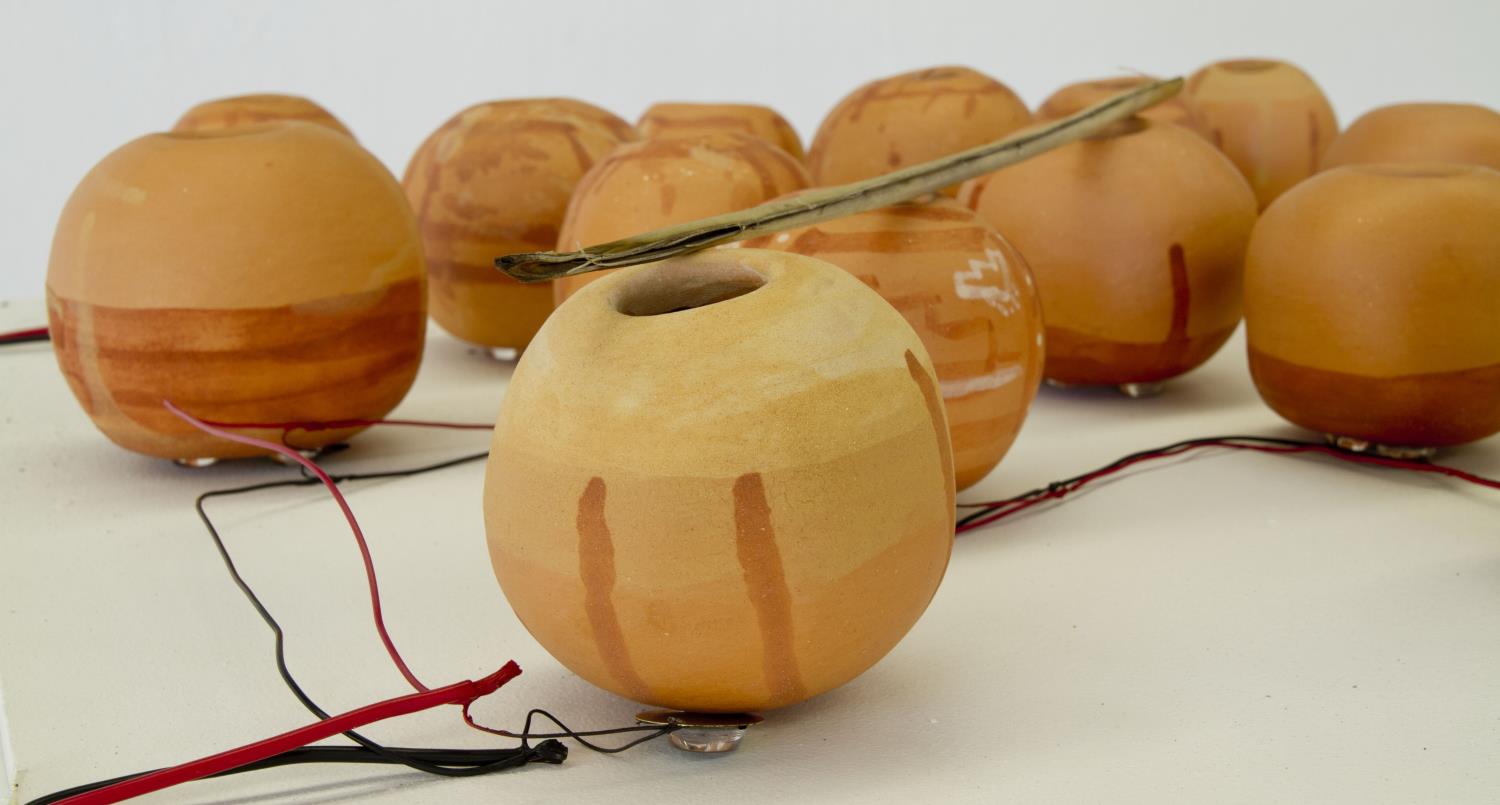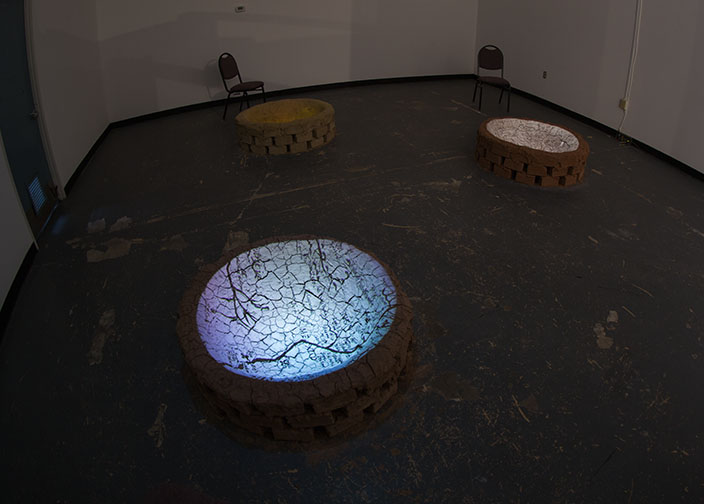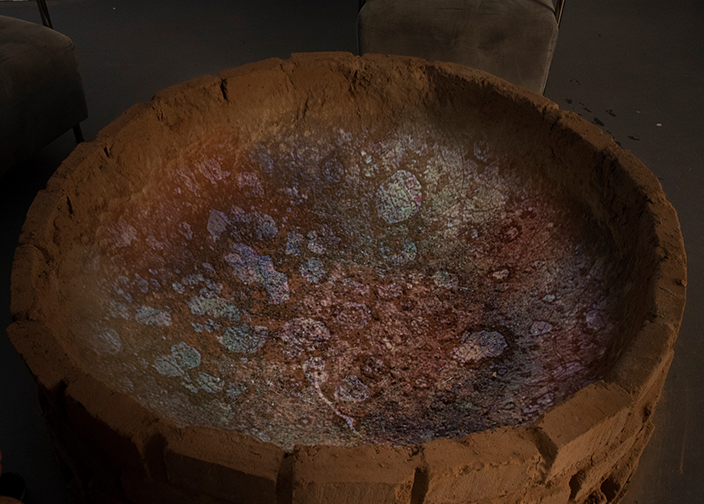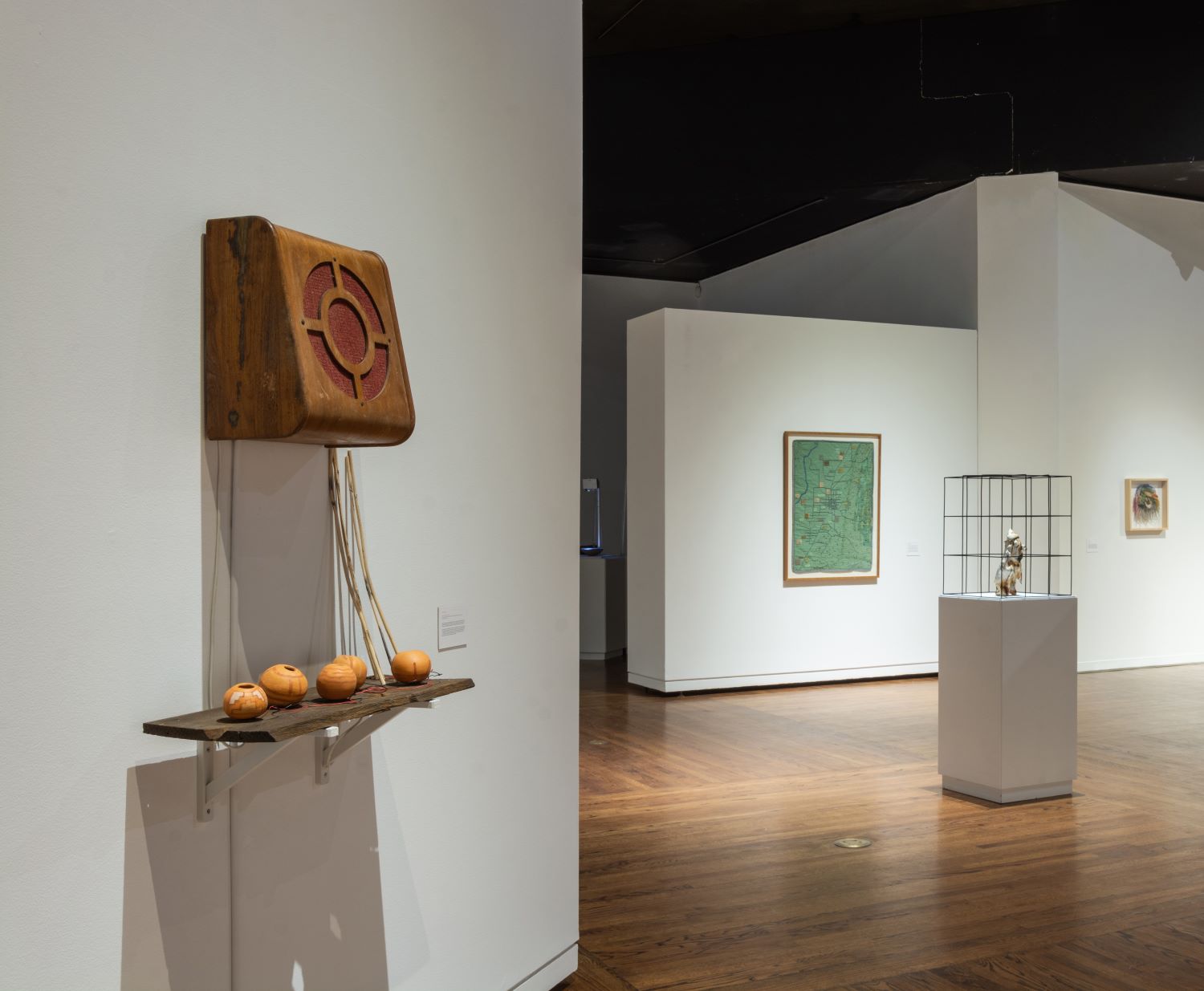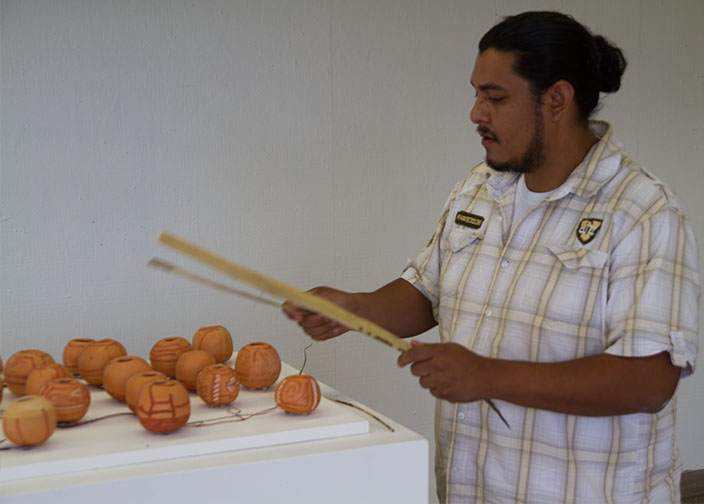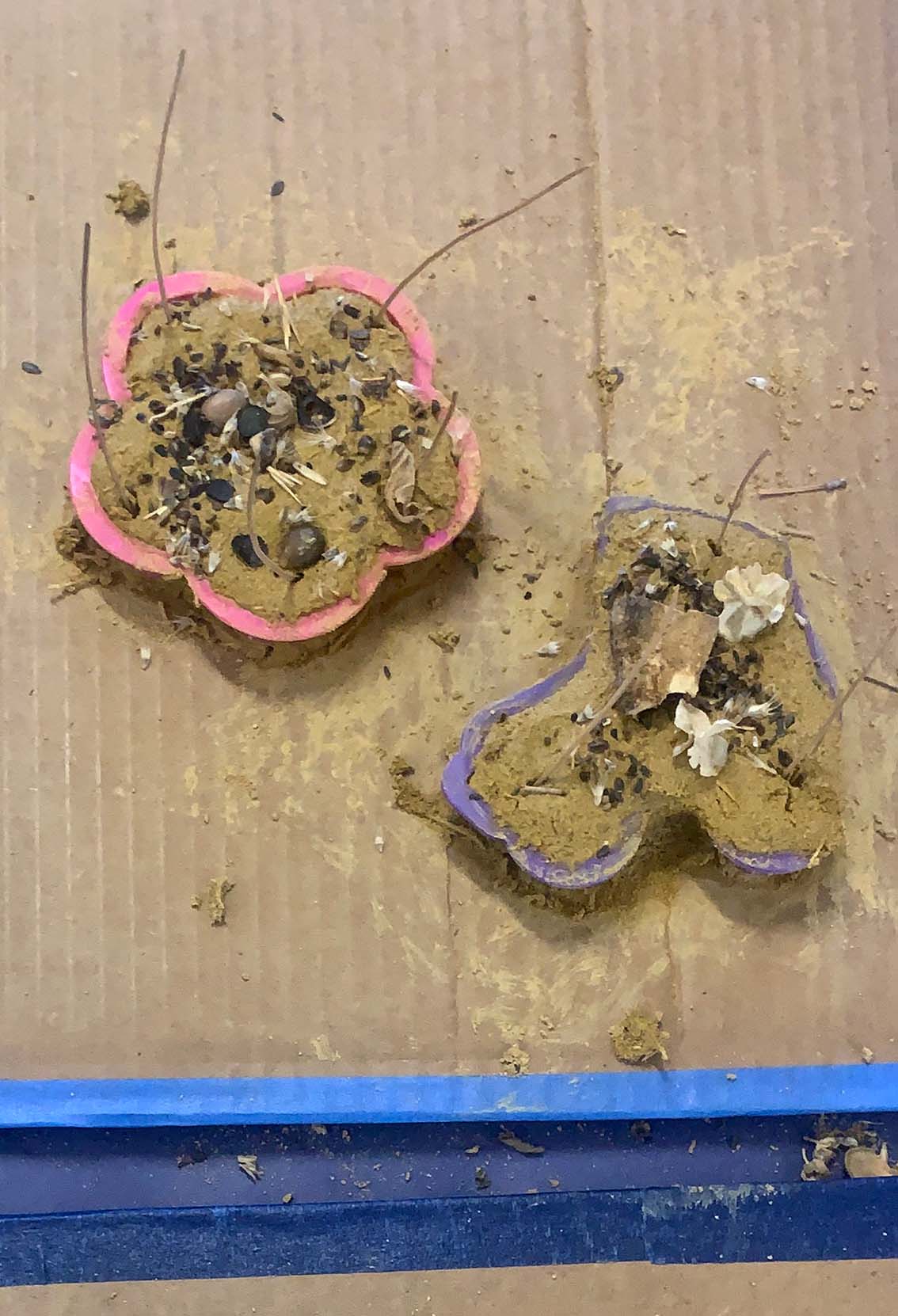

Growing Futures
March – May 2025
Adobe, Seeds, Stones, Wood
An Eroding Seed Sculpture Project funded by the Santa Fe Department of Arts and Culture: Art is the Solution 2025 Grant. This Project is a multi-faceted project that works to enrich Santa Fe Schools and Open Spaces with Eroding Seed Sculptures. Eroding Seed Sculptures are adobe sculptures that are impregnated with seeds. As the sculpture erodes, it plants seeds into the surrounding area incubating a wild garden.
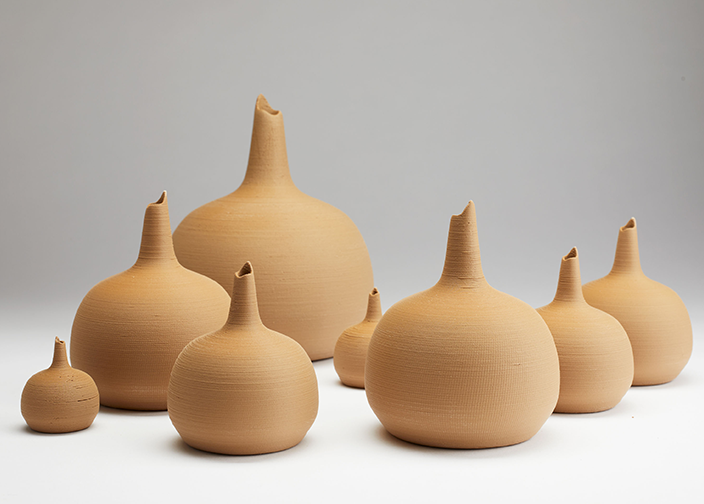
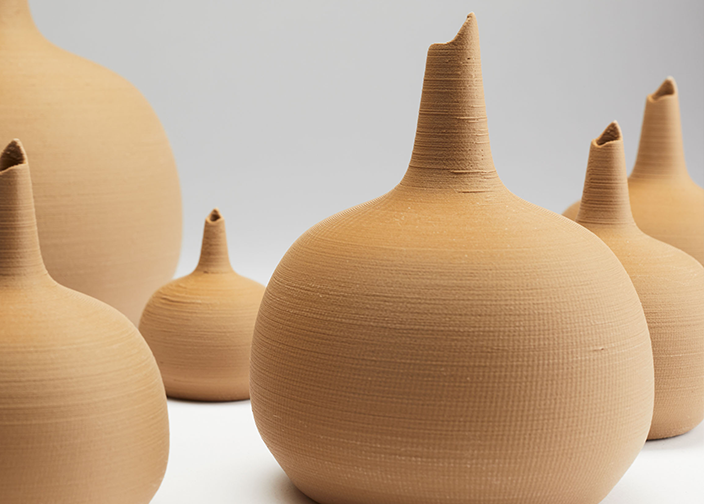
Anthropogenic Frequency
2022 – current
3D printed wood filled PLA filament
This body of work looks at the effects of human caused sound on the growth of plants. From Corn being sung to by indigenous farmers to the humming of well motors, the ecosystem is adapting to our noise. The plants are listening. Each vessel is 3D printed in a plant based plastic filament infused with wood. The wood filament 3D prints are resonators which hold the sound of specific frequencies. The frequency of each vessel is isolated to the optimal sound to stimulate the plant growth of specific plants. To hear what the plant hears, put the bottom hole of the vessel near your ear and listen.
Retablos
2017 – 2023
Foraged clay, sand, lathe, on board
Clay paintings using raw hand gathered clay to depict the water rights and irrigation channels on farmlands. The tribe’s boundaries are depicted in red clay, and the water rights are in turquoise pigmented white clay lines. The Mission Church is demarcated by the turquoise stone embedded in the center. Retablos were a hybrid indigenous and Spanish art form for saint worship and depicted catholic patron saints. Each mission church had a patron saint which influenced the church’s mission within the community. This map hopes to describe how the influence of the colonial Spanish Missions still affects indigenous access to resources today.
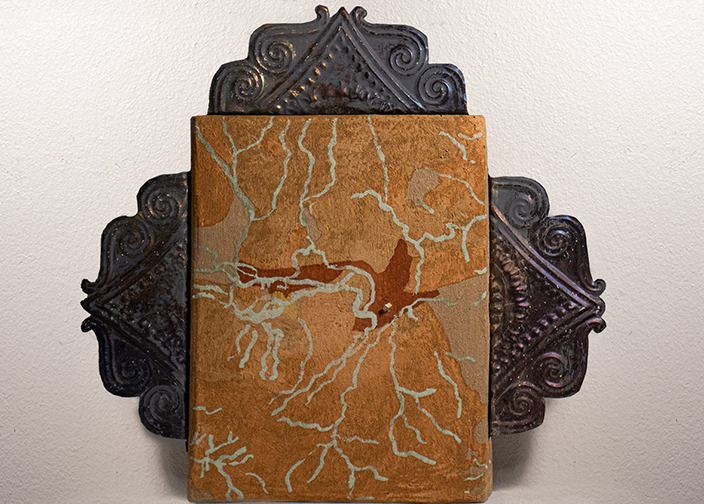
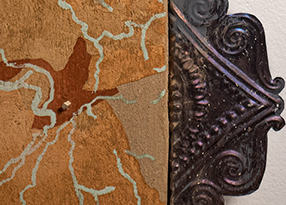
Fractured: Broken Landscapes
2015 – 2021
Adobe bricks, Adobe clay, wire mesh, sand, seeds
Adobe sculpture 3.6’ diameter x 15” tall with video projection. Each sculpture is composed of adobe bricks plastered with adobe mud. Video projections include images of local maps being erased by earth, wind and rain overlaid by trails of people near sites where the clay of the sculpture was mined. Each element focuses on processes necessary to gather the materials, and the interruptions of roads, railways, airplane airspace, and waterway diversion channels which fracture the landscape.
TreeFlow
2021
Foraged Clay and Earth Pigments, vinyl cut stencil from USGS ArcGIS waterflow data
Treeflow is a clay painted mural at the Albuquerque Museum. The mural describes the history of water along the Middle Rio Grande Valley. Tree rings are a way to describe the history of the Rio Grande watershed and can reveal the river’s water levels and temperature. This work uses clay harvested along the river’s tributaries to paint the history of drought and climate change in the Albuquerque area for the past 400 years. Clay holds the memory of the movement of water and references the earth that the river carves. The rings are color coded to tell the river’s story of temperature and flow, using greens, yellows and browns for the cooler times and purple and terracotta red to describe the hottest times.
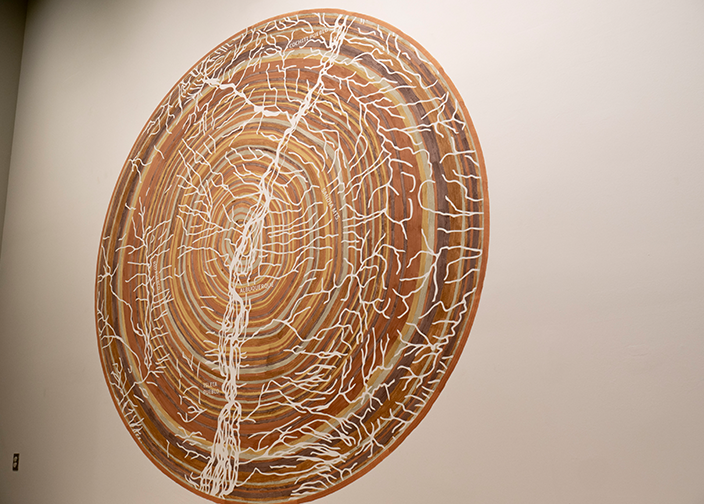
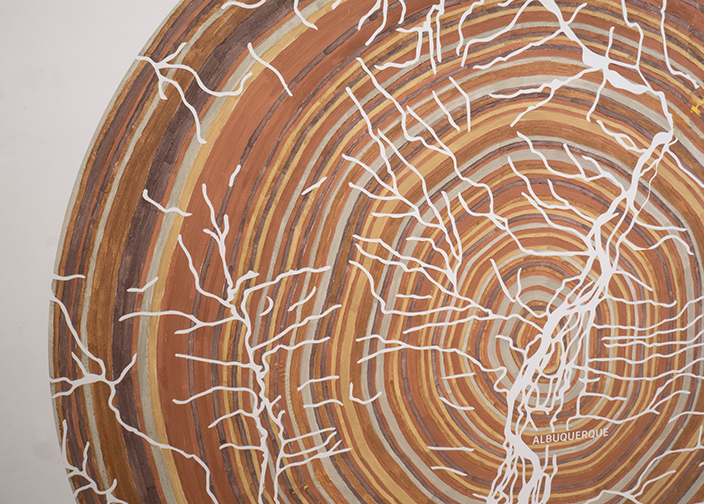
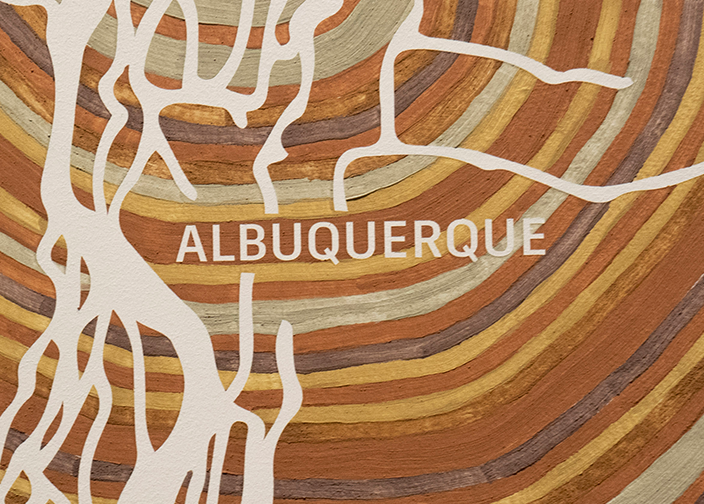
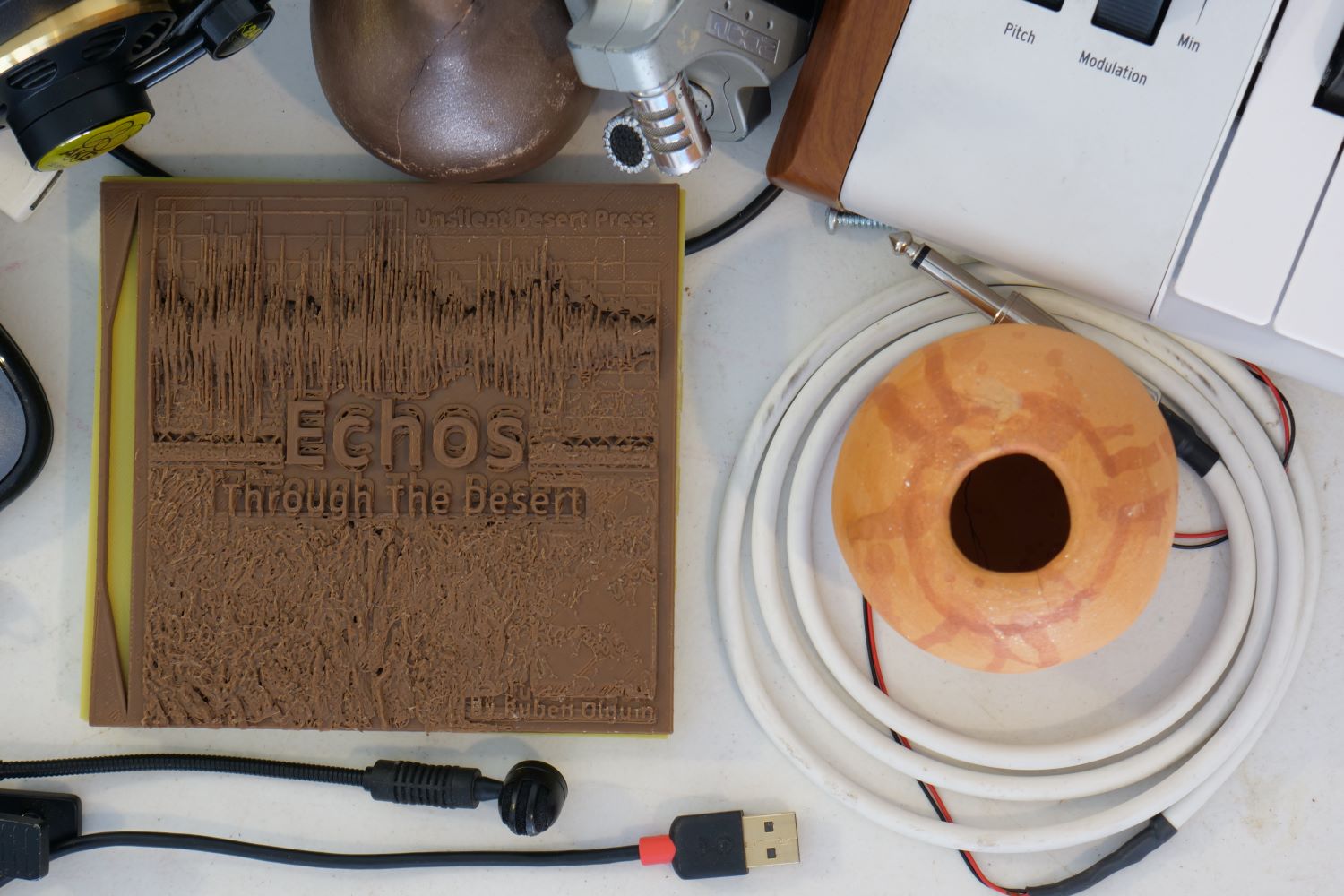

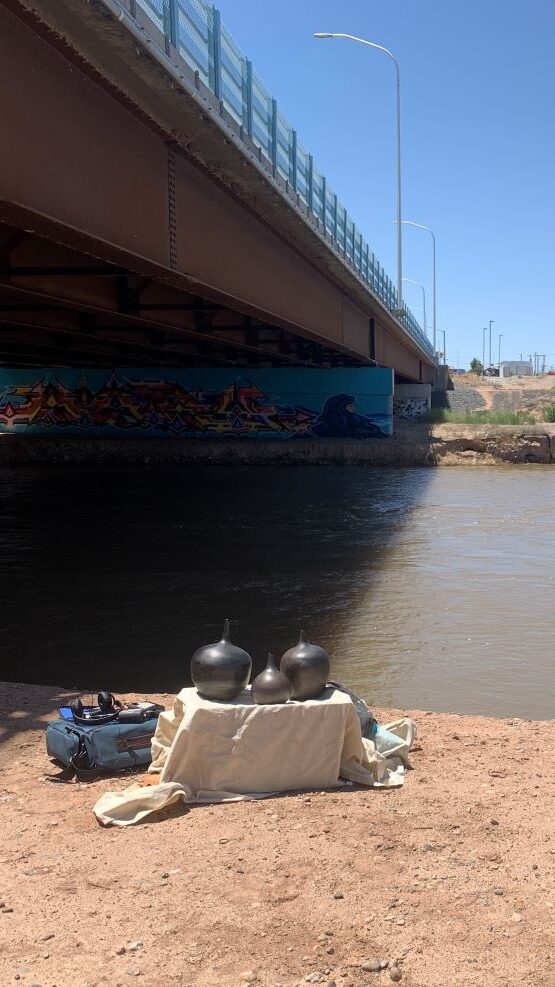
Echos Through the Desert
2021
Live Location recordings using handmade clay resonators, on-air radio recordings, and site specific contact microphone recordings.
This experimental sound album was made exploring the impacts of colonization of the American Southwest through the sonic environment. Recordings were made at several locations throughout the desert at sites of colonial conflict. Each site represents a different era of colonization from first colonial contact through the American Indian School era. Recordings were made using hand built resonators which isolate mechanical and electronic frequencies. Open air radio frequency recordings were integrated along with contact microphone recordings capturing the overall noise imprint on the location. Each composition reflects the stories that occurred at each site, creating a moment of reflection on the atrocities of colonialism that still impact the people and landscapes of the region.
Purchase the Album on CD, Digital Download, or Limited Edition 3D printed Case on Harmonic Ooze Records
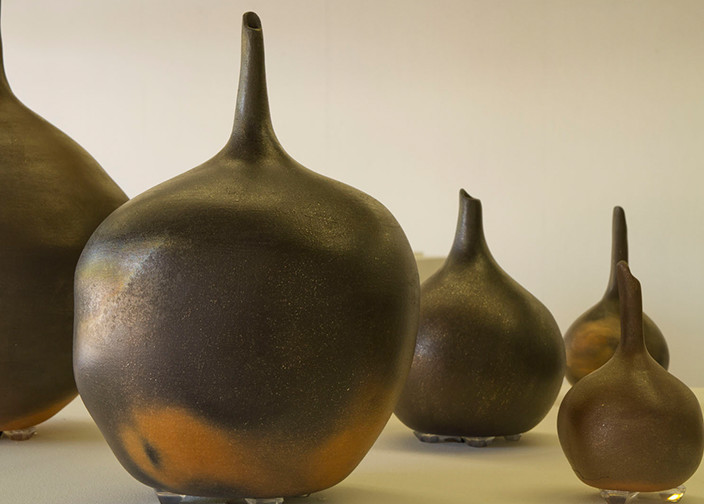
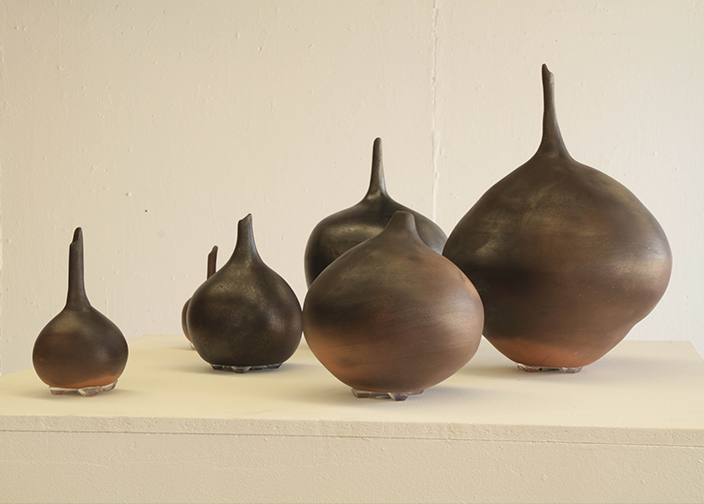
Songs of Our Fathers
2014 – Current
Hand gathered micaceous clay, stone burnished and pit fired.
Songs of Our Fathers are hand made pottery vessels using traditional pueblo pottery clay and methods. Each vessel is a sound resonator capturing electronic and mechanical noise. They are tuned to the 50hz and 60hz frequencies ranges and isolate mechanical noise in the environment.
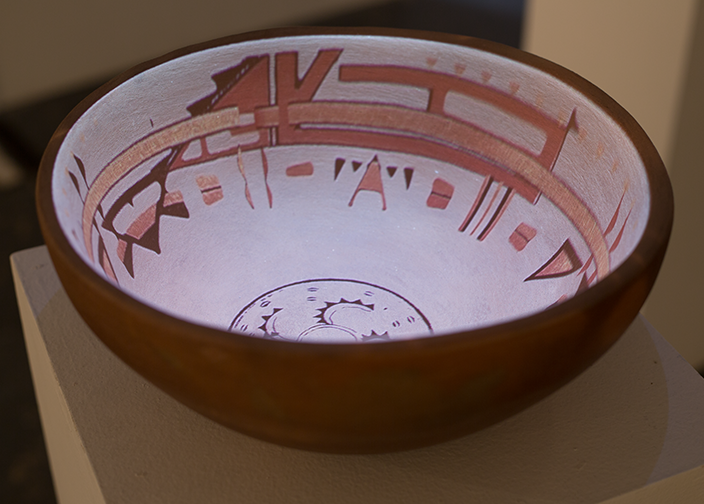
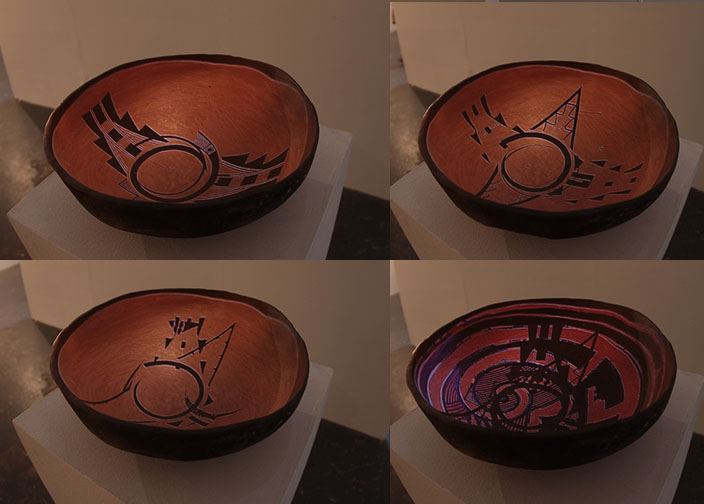
Traces
2014 – Current
Foraged micaceous bowl with video projection
Foraged micaceous clay pit fired bowl. Pueblo inspired processes use the Puki as a base vessel for all other vessels they make. Here the Puki is seen as an art object unto itself, with video projected imagery from microfiche plates of late 19th, early 20th century archeologists, who plundered the ground in search of buried indigenous cultural artifacts. The microfiche aesthetic brings a ghostly flickering haze over the images which are presented in a negative to recall the researcher’s perspective of historical documents. It questions ownership of archeological images, and artifacts.
Drum Migrations
2014 – 2015
Hand gathered micaceous clay, stone burnished and pit fired, Yucca stick, piezoelectric contact microphones, wires, electronics, speaker and amplifier.
Drum Migration is an interactive sound sculpture that allows the viewer to play pottery drums. The drums use the aesthetic of the wires to create a sense of connection between the pottery, delineating a physical and historical path of the influence of modern society on traditional indigenous culture. Each pottery vessel is a style of form found throughout Pueblo history, but the designs evolve over time from Late Basket-maker styles through Contemporary styles. By playing the work the viewer finishes the work by letting each vessel influence the tone of the drum.
